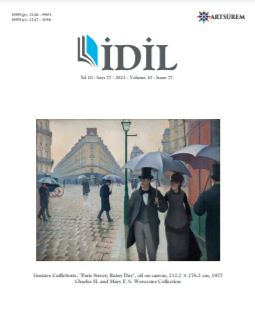RUH ADAM ROMANI VE KAYIP OTOBAN FİLMİNİN METİNLERARASILIK KURAMI DÂHİLİNDE KARŞILAŞTIRILMASI
COMPARISON OF THE NOVEL “RUH ADAM” AND THE FILM “LOST HIGHWAY” WITHIN THE SCOPE OF THE INTERTEXTUALITY THEORY
Author(s): Özgehan ÖzkanSubject(s): Studies of Literature, Turkish Literature, Film / Cinema / Cinematography, Theory of Literature
Published by: Sanat ve Dil Araştırmaları Enstitüsü
Keywords: intertextuality; Soul Man; Lost Highway; postmodernism;
Summary/Abstract: The intertextuality is a theory based on the thesis “There is no unspoken word under the canopy of heaven”. Accordingly, no text of any genre whatsoever is entirely original and spoken for the first time. It certainly bears in itself the traces from texts that have previously found an expression. Although the intertextuality is a concept that dates back to old times when human starts to speak, it has been named by the postmodernism conceptualized in the 1960s. In intertextuality, every text is related to each other. The writer of the text creates his/her own text on the basis of the infrastructure created in his/her mind by those which were written before. Likewise, readers / audiences perceive different texts experienced by them by comparing with their previous experiences and establishing intertextual relations between them. In this context, the intertextuality is a multidimensional structure that includes text writers, texts and readers. In this study, Nihal Atsız’s novel, Ruh Adam (1972), and David Lynch’s film, Lost Highway, will be compared within the scope of the intertextuality theory. Common points between the both texts, one of which is from the world of literature and the other from the world of cinema, will be determined in terms of form and content.
Journal: İdil Sanat ve Dil Dergisi
- Issue Year: 10/2021
- Issue No: 77
- Page Range: 79-100
- Page Count: 20
- Language: Turkish

